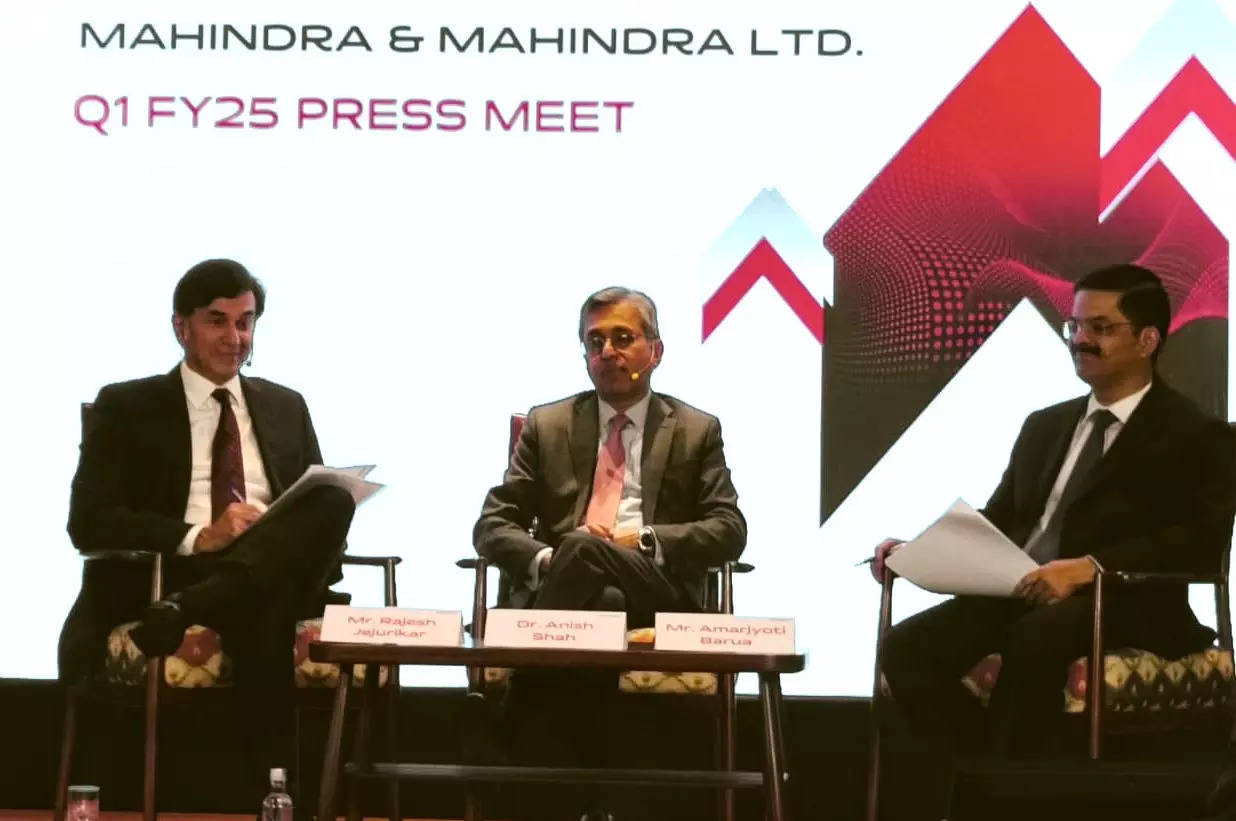
Some of the electric vehicle (EV) markets globally are facing a downturn. But, auto major Mahindra & Mahindra has reaffirmed its commitment towards EVs and it is quite confident that this will not happen for the Indian market as it has a long way to go.
“There are certain markets globally that are seeing some noise due to a lack of charging infrastructure but they have about 20% EV penetration. India is at 1.5% EV penetration today, and we have a long way to go. For India, EVs have a direct impact on reduction in fuel cost and emissions,” Anish Shah, Managing Director & CEO, M&M, said, at the company’s post-earnings press meet on Wednesday.
According to him, the starting point of the transition to electrification is having desirable products in the market.
“..that is something that hasn’t quite come into the Indian market yet. As that comes in, it will start creating the demand and we will start seeing a greater pull for EVs,” he said.
For the current fiscal year, the automaker plans to add about 15,000 additional capacity a month. This includes 10,000 units for EVs and 5,000 for models like the Thar 5-door, XUV3XO and XUV400. With this, the company’s monthly capacity will increase to 64,000 units, up from 49,000 units a month at the end of FY24.
| Per Month Capacity | FY20 Exit Capacity | FY23 Exit Capacity | FY24 Exit Capacity | FY25 Exit Capacity | FY26 Exit Capacity |
| Overall SUV Capacity | 19,000 units | 39,000 units | 49,000 units | 64,000 units | 72,000 units |
About its commitment to EV technology, Rajesh Jejurikar, Executive Director & CEO (Auto and Farm Sector), M&M, said the company is optimistic about its EV plans and is “on track” with its renewed EV strategy of launching a series of models starting 2025.
The Mumbai-based automaker plans to introduce 7 BEVs (battery electric vehicles) by 2030. Currently Mahindra sells the XUV400 in the EV segment.
He added that one of the challenges that the Western world, especially Europe, had was that most of the cars there were built on NMC technology– the costs of which stayed very high compared to LFP. “A lot of what we are doing is only LFP as we go into a new product. So the relative costs compared to NMC is in a better equation,” he said.
The company currently offers petrol, diesel and EV powertrain for its SUVs. On the possibility of adopting other options, Shah reiterated his plans on considering hybrids, “If there is a very strong consumer demand for hybrid powertrains, we can get that at a reasonable timeframe as well. So from that standpoint, we are pretty confident in terms of where we are positioned right now.”
In May, ETAuto reported about Mahindra’s plan on hybrid technology.
About 16 years ago, at the Auto Expo 2008, the automaker first displayed different platforms of drivable full hybrid vehicles, micro (start/stop) hybrid vehicles, among other models. ETAuto has learnt that a few years ago Mahindra had started working on the hybrid version of the Marazzo MPV, however the project never got to the production stage.
For now, the company is gearing up to introduce the 5-door Thar Roxx on August 15.
Partnership with Volkswagen
In February this year, Volkswagen Group and M&M signed a deal for the supply of certain electric components as well as unified cells from Volkswagen’s MEB for Mahindra’s electric platform INGLO.
Both the companies will continue to evaluate a potential expansion of the collaboration, the companies shared at the time.
In response to a question on M&M being the partner that Volkswagen is looking for in India, Shah said, “We have had a very good relationship with Volkswagen. At any point in time with any of our businesses, if there is a solid reason to do a partnership that benefits us then that is something we would look at and that is where we are right now.”
On Wednesday, M&M reported a 20% growth in its consolidated net profit after tax (PAT) at INR 3,283 crore for the first quarter ended June 30, 2024. The company’s net profit stood at INR 2,745 crore in the year-ago period.
Revenue increased 10% year-on-year to INR 37,218 crore when compared to INR 33,892 crore in the April-June quarter of last fiscal.

















